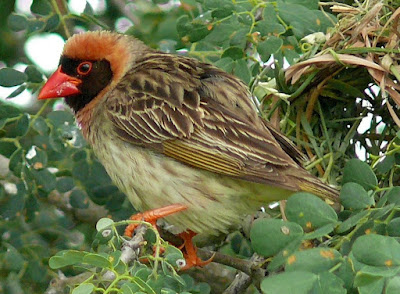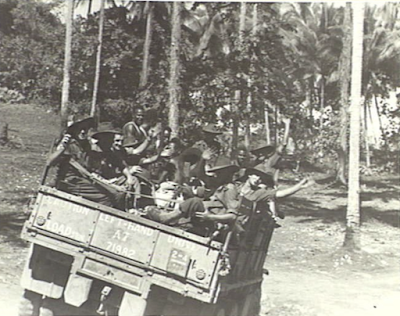Successful attempts to reintroduce the Eurasian Beaver to Britain are now well known. Fortunately, and despite opposition, the various releases both ‘legal’ and ‘illegal’ (how it can be illegal to release animals native to mainland Britain I have difficulty fathoming out) seem to be working. Beavers are said to have been extirpated in the 1500s by hunting for fur, meat and castoreum, a secretion formed apparently by the walls of the castor sac near the anus, which was used in perfumery and as a food flavouring.
Articles have reported historical accounts of beavers being kept on large estates, possibly with a view to their eventual wider release. Most articles report that the beavers involved were not the native Eurasian Beaver (Castor fiber) but the North American species, Castor canadensis. However, examination of original records indicated that this was not so in one of the introductions, the first I describe.
The 3rd Marquess of Bute, John Patrick Crichton-Stuart (1847-1900), acquired beavers for his estate Mount Stuart on Bute, an island in the Firth of Clyde thirty miles from where I am writing this article. He is said to have imported four beavers in 1874 to be kept enclosed in a small wood. Since animals in zoos and other collections never ‘die’ but are ‘lost’, ‘poor doers’ and the like, these beavers were ‘not succeeding’ A further seven were then obtained in 1875. Those animals bred but the total numbers at any one time seemed to vary with the person doing the reporting if not the counting; 12 to 28 seems to be the range. As I indicated, most second-hand reports of the beavers on Bute have stated that they were Castor canadensis. However, the excellent website of the Bute Museum website contains more accurate information:
Beaver Castor fiber were introduced to Bute in 1874 by the 3rd Marquess of Bute, but the species had died out by 1890. They were at one time reported to be the North American Beaver Castor canadensis, but correspondence in the Bute Archives revealed that the Beavers came from Scandinavia [references to research by the late Dr Jack Gibson].
Another group of beavers was in the south of England and they were reported as Castor canadensis. An account (Beavers in Sussex!) was given by L.R. Brightwell* in Animal and Zoo Magazine in 1938. Sir Edmund Loder (1849-1920) the then owner of Leonardslee, an estate near Horsham in West Sussex, at one time kept coypu and capybaras as well as the beavers. Brightwell’s seems to be the most accurate account of the date of their acquisition—around 1897. However, a letter to Nature in 1897 stated they had been there since 1889--the date Loder bought Leonardslee from his in-laws. A letter to The Times in 2010 stated that according to an old magazine article the beavers had been obtained by Loder’s great-grandfather in the 1850s. However, that cannot be the case because Loder did not buy the estate until 1889. According to the website for Leonardslee Gardens, beavers were on the estate until 1947.
Brightwell visited Leonardslee, where he was shown around by a George Stoner†, and described the ‘beaver yard’:
This is a lake, a quarter-mile long by fifty yards wide, hemmed in by trees and an inconspicuous barrier of sheet iron planted a yard deep in the soil. Such trees that stand within the enclosure wear skirts of sheet iron, and the necessity of such safeguarding is at once apparent. The dead lie all around—sixty-foot pine, larch and beech, white as ivory, for not one particle of bark has the beaver left upon them.
An early disaster came with flooding after a storm. The beavers swam over the barrier and reached the sea, thirteen miles down stream. There some fishermen in a boat hit the strange animals over the head and carried the corpses ashore in order to find out what they were.
A heavy iron grid spanned the stream from the lake. Every night the beavers attempted to build a dam at that point and every morning the estate worker with the job of looking after the beavers had the job of undoing their labours in order to prevent flooding.
As well as beavers, both the Marquess of Bute and Sir Edmund Loder, acquired wallabies for their estates; those at Leonardslee are still there. The ones on Bute were released into the wild but I do not know how long they survived there.
For some time it seems the two species of beaver, North American and Eurasian were regarded as one. But they are ‘good’, true biological species, with different numbers of chromosomes. Attempts at hybridisation have failed to produce live young and where introduced C. canadensis meet C. fiber in Europe there has been no breeding between the two.
Brightwell remarked in discussing the tail of the beaver its use to generate an alarm:
Used as an alarm gun, it can strike the water with a force like a pistol shot…
That sound, which made me jump, was my first introduction to Castor canadensis. In 1973 and up very early because I couldn’t sleep on with 5-hour jet lag I wandered around the campus of Colby (now Colby-Sawyer) College in New London, New Hampshire, just after dawn. I stopped to look at chipmunks in the woods and as I passed the pond, the ‘force like a pistol shot’ hit my ears. I turned and there was a beaver. I watched the beavers there for several mornings that week and again when I was there later in the 1970s for Gordon Conferences; I was even able to show Americans their first beaver. However, by the 1980s I did not see any and the latest view on Google Earth shows the pond largely hemmed in by a new car park.
*Leonard Robert Brightwell (1889-1962) was a well-known and prolific author and illustrator. He had strong academic zoological connexions since he illustrated The Science of Life for the authors, H.G. Wells, Julian Huxley and G.P. Wells.
†I find George Allen Stoner (1869-1964) living in Horsham, three miles from Leonardslee, described as an ‘estate worker’ in the 1939 Register.



























